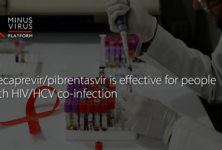Researchers in two new studies say they can leverage the body’s own antibodies to fight the virus that causes AIDS.
In the field of HIV research, antibodies continue to be a targeted area.
Two new studies published January 19 in Science Translational Medicine offer potential new treatment pathways that could make the condition a thing of the past — or at least slow its progression.
“Antibodies have long been thought of as a crucial ingredient for an effective vaccine that could prevent HIV infection, but more recently, researchers are looking at enlisting antibodies to treat or possibly even cure HIV after infection has taken place,” Rowena Johnston, Ph.D., vice president and director of research at amfAR, The Foundation for AIDS Research, told Healthline.
T cells as hunters
One of today’s studies explained how scientists have created a two-pronged antibody that aids the immune system in finding and eliminating HIV-infected cells that are hard to see.
HIV can hide in the CD4 helper cells that are located in the lymph nodes, which has made it more difficult to fight the disease.
In the past, vaccines and checkpoint inhibitors were able to boost CD8 T cells to kill the virus, but they weren’t effective if they didn’t have access to the area where HIV was replicating.
The CD8 T cells were able to get into the lymph node follicles but couldn’t kill the virus.
However, researchers discovered killer CD8 T cells in that same area that could be used to hunt down the infected cells. They showed that the CD8 T cells could be triggered to kill CD4 cells when they were cultured with a dual-functioning antibody that was made to target the virus and dispatch CD8 T cells.
They say that these bispecific antibodies could be a treatment strategy.
In addition, they emphasize the use of bispecific antibodies may be considered as part of a “shock-and-kill” treatment strategy in those people taking suppressive antiretroviral therapy (ART) for extended periods of time.
Johnston said this approach addresses two main challenges in HIV research: How to access and how to kill infected cells.
“They engineered an antibody that may solve both issues. It takes the brakes off killer T cells and lets them do what they’re designed for, that is, kill virus-infected cells where they live,” she said.
The results are promising, but to prove it works it must be tested in people with HIV.
Dr. Antonio Urbina, an associate professor of medicine at the Icahn School of Medicine at Mount Sinai Hospital in New York, was also optimistic about the results of the study.
“But in order to truly eradicate HIV, the potent CD8 T cell responses would also need to penetrate other reservoir sites outside of lymph tissue, for example, the central nervous system,” he told Healthline.
Power in numbers
In the other study, researchers found that three antibodies could neutralize and stall the virus.
For most people with HIV, the virus spreads rapidly throughout the body and goes undetected by the immune system.
In rare cases, though, some people develop broadly neutralizing antibodies (bNAbs) that keep the pathogen hidden for extended periods of time.
While doing research on treating humanized mice, researchers discovered three bNAbs in one person. Scientists believe the bNAbs can keep HIV infection from progressing to AIDS over a span of 30 years.
When they looked at that person’s virus five times between 2006 and 2015, they found that the HIV was vulnerable to neutralization by at least one of the antibodies. In total, a single bNAb was associated with decreased virus, and all three together lowered it 10 times over.
As a result, the researchers believe that the three bNAbs could be used as a passive immunotherapy. Further clinical trials are needed to evaluate its efficacy.
Johnston noted that the combination of antibodies can prevent a treatment-resistant virus from emerging.
“It would be very interesting to know whether the antibodies … can not only neutralize the virus, but also kill the cells that produce it,” Johnston noted.
By Kristen Fischer


 ПОИСК ПО САЙТУ
ПОИСК ПО САЙТУ  поиск по ресурсному центру
поиск по ресурсному центру 



